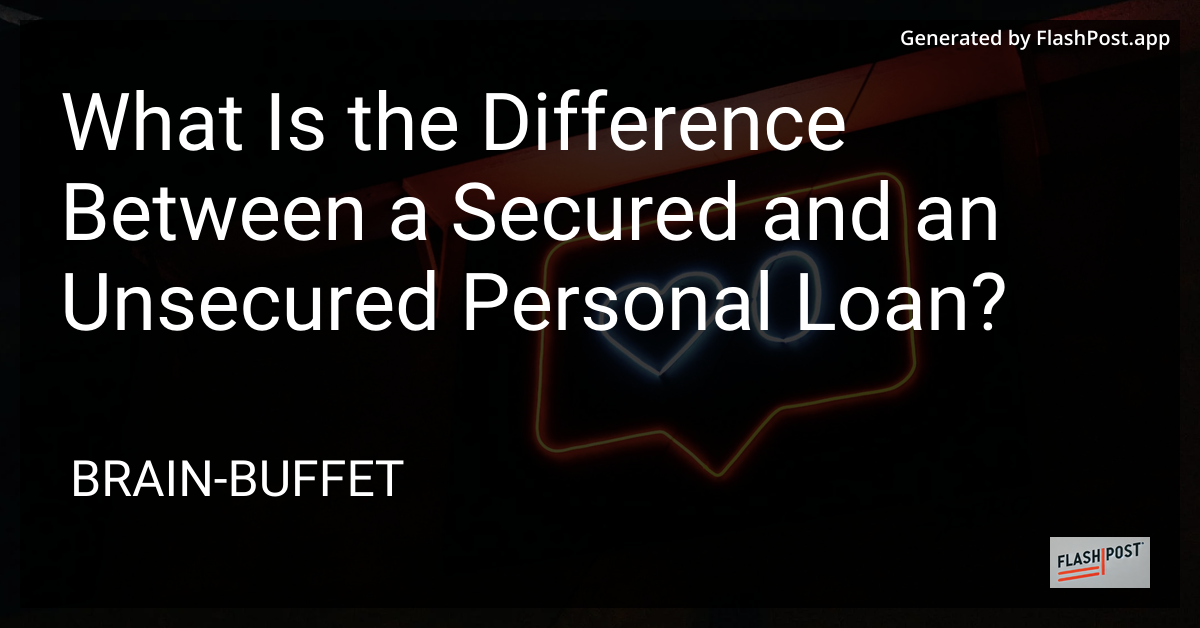What Is the Difference Between a Secured and an Unsecured Personal Loan?

When considering financing options, one of the key decisions you'll have to make is whether to take out a secured or an unsecured personal loan. Understanding the differences between these two types of loans can help you make the best choice for your financial situation. In this article, we will explore the core distinctions, benefits, and potential drawbacks associated with each type of loan.
Secured Personal Loans
A secured personal loan is backed by collateral. This means you, the borrower, must pledge an asset such as a car, house, or savings account to secure the loan. If you fail to repay the loan, the lender has the right to seize the asset to recover the outstanding debt.
Benefits of Secured Loans
- Lower Interest Rates: Since a secured loan poses less risk to the lender, interest rates are generally lower compared to unsecured loans.
- Higher Borrowing Limits: With collateral involved, lenders might be more willing to offer larger loan amounts.
- Improved Approval Chances: If you have a poor credit score, a secured loan may increase your chances of approval.
Drawbacks of Secured Loans
- Asset Risk: The primary risk is the potential loss of the collateral if you default on your loan payments.
- Application Process: Secured loans often have a more rigorous application process due to asset evaluation.
Unsecured Personal Loans
Unsecured personal loans do not require collateral. Instead, approval is generally based on your creditworthiness and income. These loans tend to have higher interest rates due to the increased risk for the lender.
Benefits of Unsecured Loans
- No Collateral Needed: You don't need to put your assets at risk, providing peace of mind.
- Faster Approval: The absence of collateral simplifies the application process, often leading to quicker approval and funding.
- Flexible Use of Funds: You can typically use the loan for a variety of purposes without restrictions.
Drawbacks of Unsecured Loans
- Higher Interest Rates: Without collateral, lenders charge higher interest rates to compensate for the risk.
- Stricter Requirements: You'll likely need a good credit score and reliable income to qualify.
- Lower Loan Amounts: Lending limits are usually lower compared to secured loans.
Making the Right Choice
Choosing between a secured or unsecured personal loan hinges on your financial situation and personal preferences. If you have assets to pledge and desire lower interest rates, a secured loan might be suitable. On the other hand, if you prefer a simpler application with no collateral risk, an unsecured loan could be the better option.
To deepen your understanding of personal finances, you might check out our guides on installment loans and debt-to-income ratio, as well as insights into how payday loans work in 2025. Additionally, see our social media strategy for payday loans to optimize your approach.
Ultimately, careful consideration of your financial needs and capabilities will guide you to the best choice between secured and unsecured personal loans.